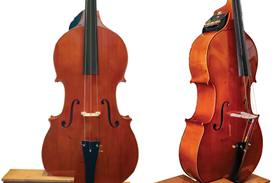- News
- For Subscribers
- Student Hub
- Playing Hub
- Directory
- Lutherie
- Magazine
- Magazine archive
- Whether you're a player, maker, teacher or enthusiast, you'll find ideas and inspiration from leading artists, teachers and luthiers in our archive which features every issue published since January 2010 - available exclusively to subscribers. View the archive.
- Jobs
- Shop
- Podcast
- Contact us
- Subscribe
- School Subscription
- Competitions
- Reviews
- Debate
- Artists
- Accessories
How to prepare for a competition: Andrea Burger, Tokyo International Viola Competition

The violist recalls the strategies that led to her victory in June 2015
The reason I enter competitions in general is to set myself a goal. I was at the Tokyo Competition in 2012, while I was studying with Nobuko Imai, because she realised I needed to have a goal to work towards and a deadline so that I could focus my energies. At that time I hadn’t found my own individual voice, and I knew that aiming for a set goal was the best way to do that.
Already subscribed? Please sign in
Continue reading this article and explore hundreds more…


























